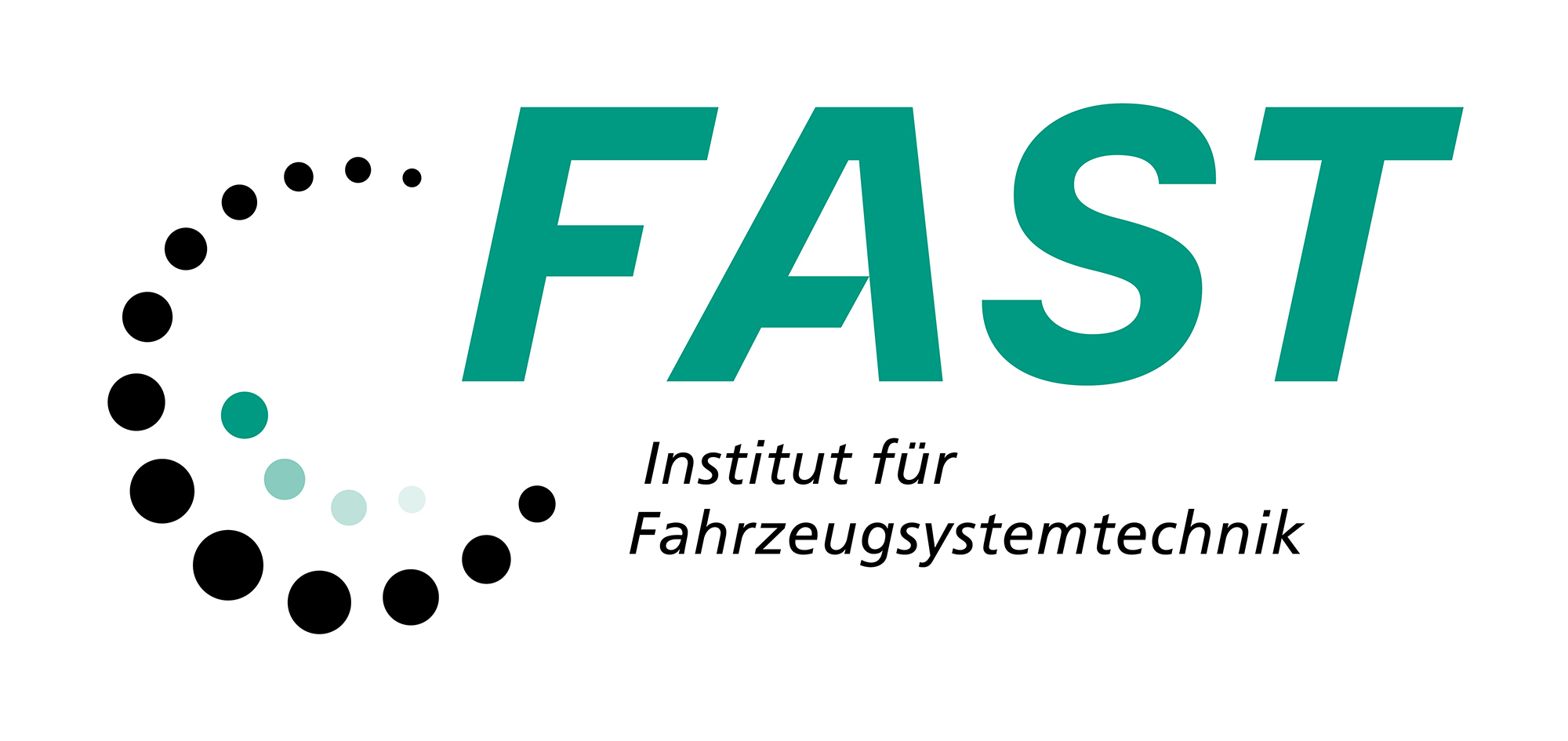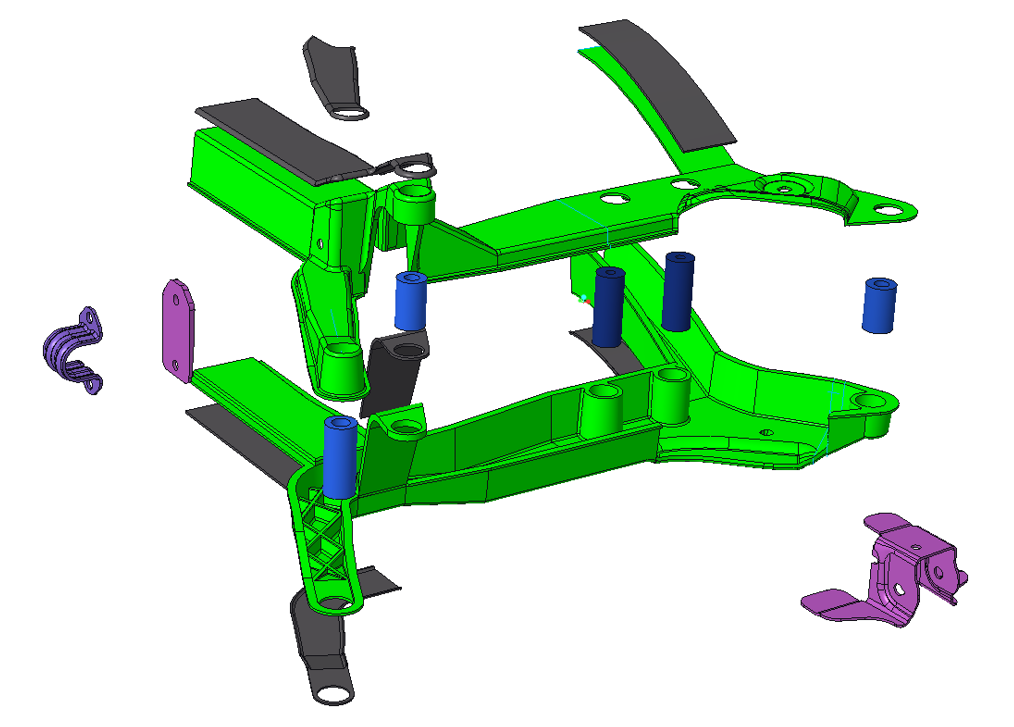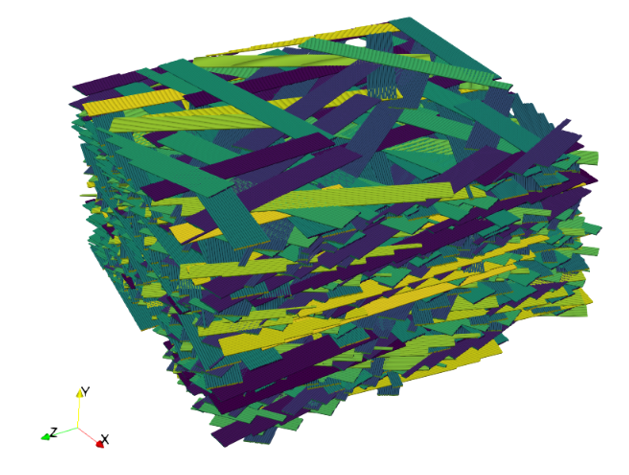ZIM - MANIFEST
- Contact:
- Funding:
Zentrales Innovationsprogramm Mittelstand (ZIM) des Bundesministeriums für Wirtschaft und Klimaschutz (BMWK)
- Partner:
Hwashin Co. Ltd.
Hanguk Mold
Korea Institute of Carbon Convergence Technology (KCTECH)
Sangmyung University
- Startdate:
01.01.2020
- Enddate:
31.12.2022
Manufacture Future Structural Parts (MANIFEST)
Motivation
The co-molding of discontinuous fiber reinforced Sheet Molding Compound (SMC) and continuous fiber reinforced carbon fiber patches combines advantages of both materials. The combination of structural performance of patches and functional aspects of SMC allows the design of tailored, highly-optimized parts.
Goals
The objective of the proposal is to design and manufacture an automobile sub-frame consisting of a substantially reduced number of parts as well as reduced weight compared to conventional SMC.
Additionally, the SMC itself will use an environment-friendly vinyl ester resin that overcomes health issues related to styrene. The vinyl ester resin will be developed for highly improved flame retardance and heat resistance.
The production of tools for the two SMC shells represents a considerable investment. For this reason, it was decided to first qualify the simulation methods, the new resin system and the bonding of the SMC to metallic inserts in a smaller validation component.
Scientific methods
Fast approximation method
In the conceptual design process, it proved too time-consuming to run a full process simulation at each iteration, including the entire design of the initial SMC delivery. Therefore, to complement the high accuracy simulation method, a fast geometric approximation method was developed to calculate the fibre orientation distributions from the geometric features of the part. This takes into account the fact that the long SMC fibre bundles are usually restricted in their position mainly by geometric constraints, which is why the vertical component is very small in flat areas of the part.
Extensions of the direct bundle simulation method for carbon fibers
In the direct bundle simulation method developed at KIT-FAST (Meyer et al. 2020, Meyer et al. 2021, Meyer 2022), individual fibre bundles are simulated during the SMC mould filling process. This novel simulation method allows a very detailed prediction of process-induced effects such as fibre-matrix separation and anisotropic flow behaviour. The previous method was based on glass fibres and academic use cases. In this project it has been extended for use in more complex components and for carbon fibres.
Carbon fibre SMCs (CF-SMCs) typically have significantly larger and wider fibre bundles. In order to approximate this fibre configuration, the bundle generator was extended to allow sub-bundles to be placed parallel to each other. Figure 3 shows the result of such a bundle configuration, where colours have been introduced to distinguish the bundle directions.
Publications within the project
Bücheler et al. 2021a: D. Bücheler, N. Meyer, P. Griesbaum, F. Henning: Next Level of Carbon Fiber Sheet Molding Compound, SAMPE Korea Forum, Seoul, Korea, 29.09.2021.
Bücheler et al. 2021b: D. Bücheler, N. Meyer, P. Griesbaum, F. Henning: Pushing Structural Sheet Molding Compound Forward, SPE Automotive Composites Conference & Exhibition, Novi. Michigan, USA, 7.-9.9.2021.
Meyer et al. 2020: N. Meyer, L. Schöttl, L. Bretz, A.N. Hrymak, L. Kärger: Direct Bundle Simulation approach for the compression molding process of Sheet Molding Compound, Composites Part A: Applied Science and Manufacturing, Volume 132, 2020, 105809.
Meyer et al. 2021: N. Meyer, A.N. Hrymak, L. Kärger: Modeling Short-Range Interactions in Concentrated Newtonian Fiber Bundle Suspensions, International Polymer Processing, Volume 36, 2021, 255-263.
Meyer 2022: N. Meyer: Mesoscale simulation of the mold filling process of Sheet Molding Compound, Dissertation, KIT Scientific Publishing, 2022.
Meyer 2022: Nils Meyer, Sergej Ilinzeer, Andrew N. Hrymak, Frank Henning, Luise Kärger: Non-isothermal direct bundle simulation of SMC compression molding with a non-Newtonian compressible matrix, Journal of Non-Newtonian Fluid Mechanics, Volume 310, 2022, 104940




